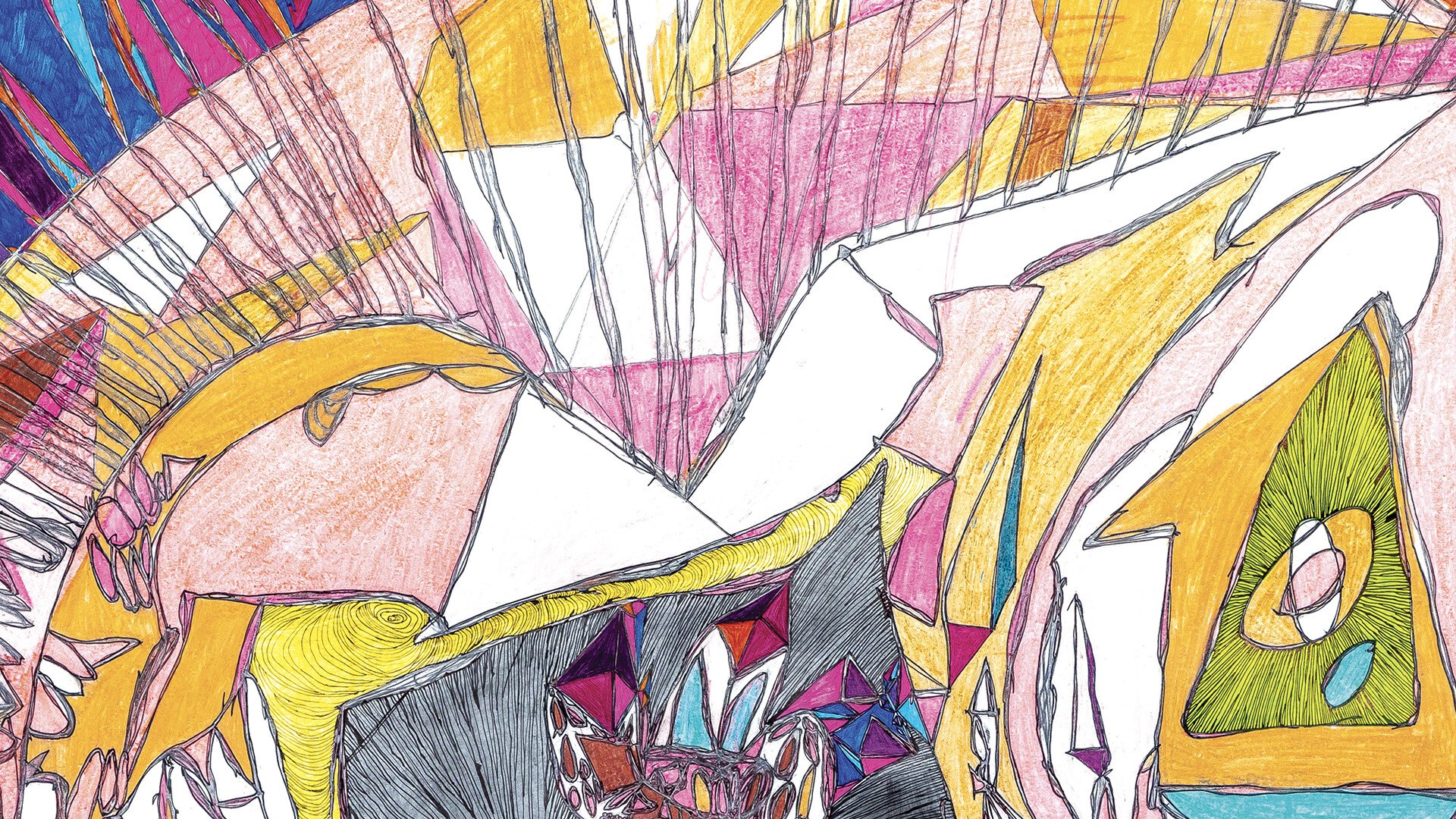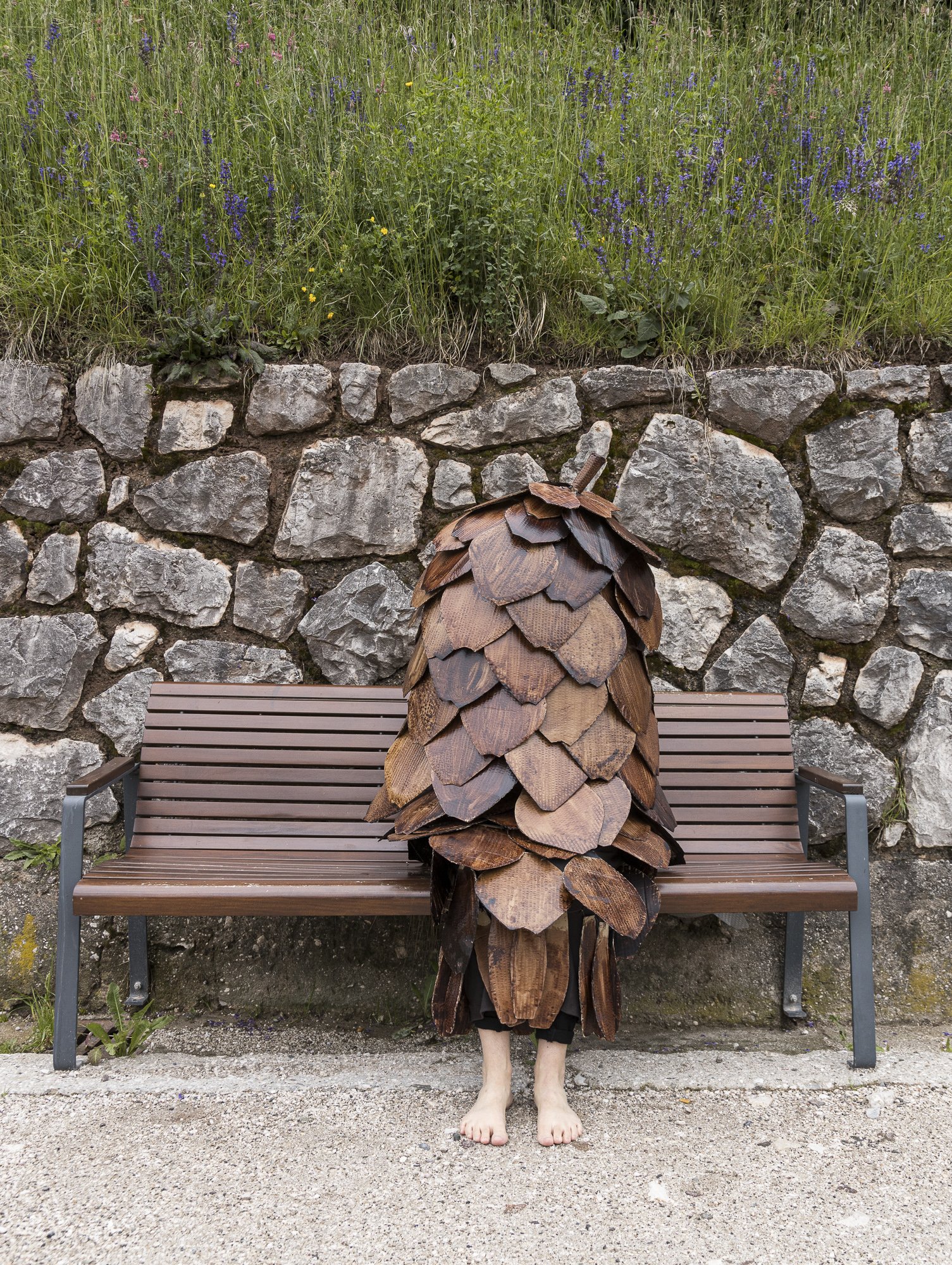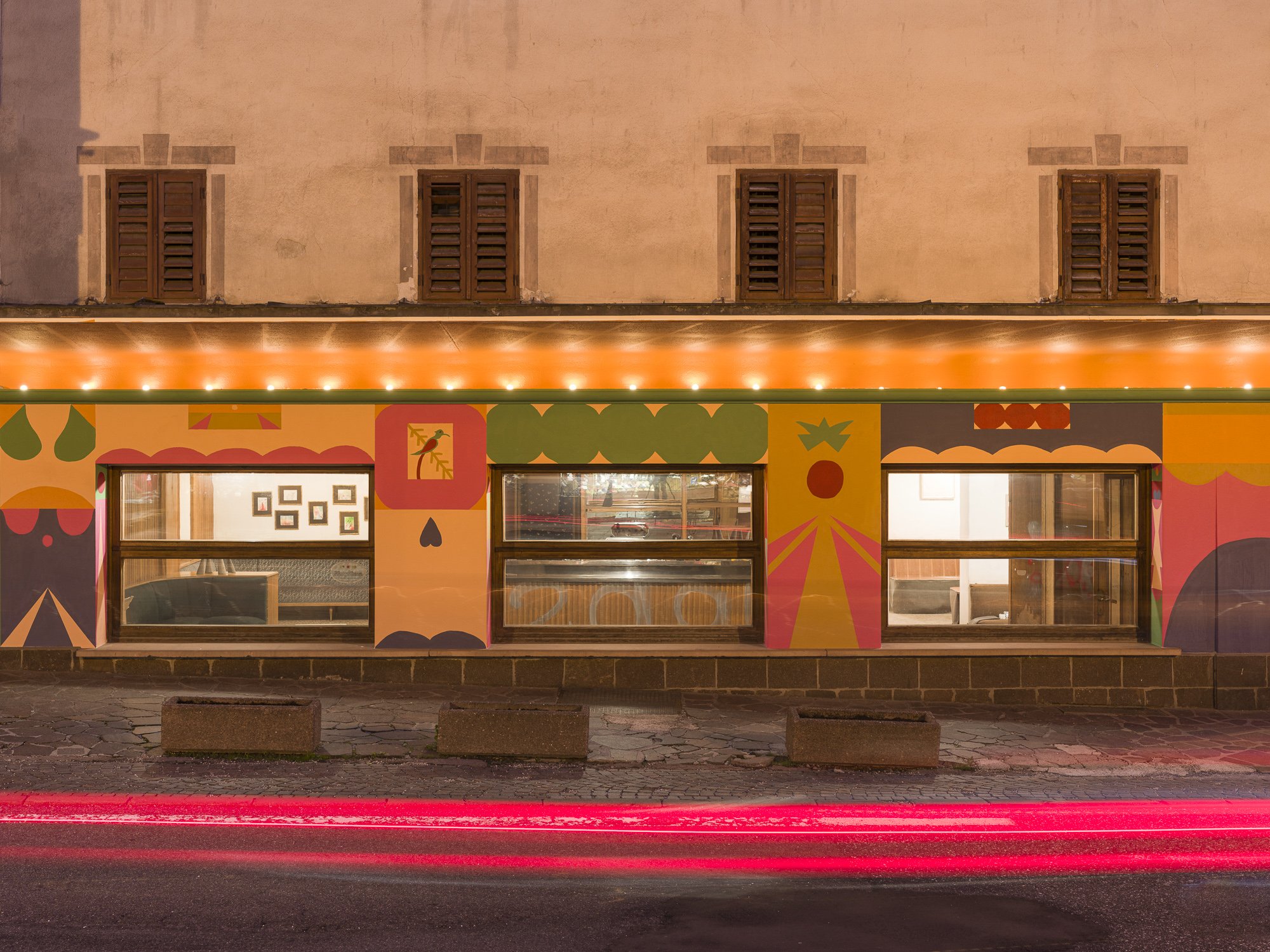
Concept
Curator
The Parliament of Marmots*
The Legend of the Fanes – one of the most fascinating Ladin myths of the Dolomites, reconstructed at the beginning of the last century by the Austrian writer Karl Felix Wolff – tells the story of a meek and peaceful populace whose kingdom extended beyond the seven mountains and seven marshes to the edge of the world. The secret behind the prosperity of this population lay in their alliance with the marmots, of whom the Fanes were indeed descendants, for it was among those animals – entrusted to them by Anguana, the water nymph – that their foremother Moltina had been brought up.
When the alliance was broken because of a princess ashamed of her people’s pact with the animals, the Fanes met with misfortune and conflicts that led to the decline of their kingdom. The few survivors thus hid away in a cave beneath the rocks, from where to this day, together with the marmots, they wait for the silver trumpets to sound, heralding their rebirth.[1]
The beliefs underlying the Dolomitic legends have deep roots, going back to the times of protohistory, to the passage from small groups of hunters and gatherers to the first organised communities of breeders and farmers. They are totemic structures that tell of the complex relationship of these archaic societies with the theme of the soul, whose presence pervades all the main entities of living nature in its freest and wildest dimension.[2]
But just what does it mean today ‘to be wild’? Where can we still find some form of natural freedom, on a planet where pristine habitats no longer exist? And what lessons can we learn from these realities? What spaces will the ruins of capitalism reserve for wild nature? What possibilities of life and what forms of survival? All these questions have guided the planning of Biennale Gherdëina 9 and – in various ways, trajectories and temporalities - the work of the artists called upon to take part.
Brought into our time, the archetypal alliance with marmots opens up a reflection on the disruption of the interspecies balance perpetrated by contemporary civilisation. From an analysis of our relationship with non-human animals, we can understand much about the more general crisis of the human pact with nature in its entirety, but also about the forms of discrimination, control and violence that afflict the human species internally. This is why the anti-speciesist theses proposed in the mid-1970s by authors such as Peter Singer are still able to question our thinking in depth.[3] Theses that, in more recent times, have been integrated and reworked as part of philosophical reflections, new anthropological studies and interspecies narratives that have come to embrace the entire sphere of the living today.
In reconstructing the ancient tales of the Dolomite oral tradition, Karl Felix Wolf drew on Nordic mythology – of which the culture of his time was permeated, also serving the promotion of the Austro-Hungarian imperial myth – losing sight of the strong link between these tales and ancient Mediterranean narratives. Dolasilla herself, the main heroine of the Fanes saga, whom Wolff describes as a kind of conquering Valkyrie, seems to have much in common with the figure of the sidereal Artemis: the Greek Goddess of the Moon, who appears in the guise of a huntress to protect the fertility of nature.
The Ladin legends are not about creation – be it of human beings or empires – but about transformation, metamorphosis and contamination, celebrating wild nature, the ‘life-death-life’ cycle and the complex and profound relationship between the various species of the living world. Rereading the myths from this perspective, the Dolomites – these monumental rocky ridges resurfaced from the sea, these remnants of gigantic coral reefs that surfaced 250 million years ago – from being a barrier, stronghold or border become a place of encounter, of mending and contamination.
By superimposing onto the background of the ancient Dolomitic legends new tales of mountains, woods, migration, animality and inter-species alliances, The Parliament of Marmots embraces a field of investigation that, along with the European continent, extends as far as the Mediterranean territories of North Africa and the Middle East, from which the totemic structures at the heart of the Ladin myths themselves seem to have derived to a large extent.
According to anthropologist Anna Tsing, the ability to create worlds is not the prerogative of humans, which is why we need to turn to ways of making worlds or modes of existence beyond the human. This does not mean adopting a post-human perspective – in which the human element disappears – but rather opening up to the telling of ‘more-than-human’ stories, in which humans lose their centrality, in the knowledge that no organism can become itself without the assistance of other species.[4]
Seeking to piece back together a possible vision of these worlds, Biennale Gherdëina 9 presents a hybrid mosaic of artistic proposals, opening up scope for a cultural and political reconnection between the Alps and the Mediterranean, between origins and perspectives, and de-conceptualising the idea of nature in favour of a narrative, existential dimension of the savage in the age of the ‘Capitalocene’.[5]
Lorenzo Giusti
*passage from the text in the catalogue
[1] Il Parlamento delle marmotte (the ‘Parliament of Marmots’) is the name given in the 1950s to the natural amphitheatre on the Alpe di Fanes, in Val Badia, where to this day, despite the presence of humans, many of these rodents still live. The underground region where – according to the legends reconstructed by Wolff – the last of the Fanes went into hiding is to be found near Lake Braies, in the valley of the same name, off the side of Val Pusteria.
[2] Cf. Ulrike Kindl, Raccontare le origini, in Nicola Dal Falco, Miti ladini delle Dolomiti. Ey de Net e Dolasìla, published by Palombi editore, Rome 2012, pp. 199–258.
[3] Cf. Peter Singer, Animal Liberation, published by HarperCollins, New York, 1975.
[4] Cf. Anna Tsing, The Mushroom at the End of the World. On the Possibility of Life in Capitalist Ruins, Princeton University Press, Princeton 2015.
[5] The term ‘Capitalocene’, introduced by Jason W. Moore, has been adopted by numerous scholars as a more coherent variant on the term ‘Anthropocene’, capable of highlighting the historical intertwining between patriarchy, colonialism and speciesism underpinning the current ecological crisis.
Artist List
Venues
Team
Contact
Curated by Lorenzo Giusti
with Associate Curator Marta Papini
Curator
Lorenzo Giusti (PhD) is an art historian and curator, a mountain enthusiast and lover of walking in natural spaces. After serving as director of the MAN Museum in Nuoro (2012-2017), currently he is the director of GAMeC – Gallery of Modern and Contemporary Art in Bergamo, where, along with numerous solo exhibitions, he has conceived and co-curated the long-term multidisciplinary programs The Trilogy of Matter (2018-2023) and Thinking Like a Mountain (ongoing) and founded, during the pandemic crisis in 2020, the digital platform Radio GAMeC. As an independent curator, he staged exhibitions, edited publications or collaborated in different roles with several public and private institutions and organizations, including Kunsthaus Baselland, Mumok Vienna, Art Dubai, Venice Biennale, Artissima Turin, Vienna Curated by Festival, Palazzo Grassi-Punta della Dogana in Venice, OGR Turin, Shenzhen Animation Biennale, FRAC Corse, Triennale Milano, Palazzo Strozzi in Florence and others. His special interests lie in the relationship between historical avant-gardes and contemporary languages and practices as well as between ecological thinking and the contemporary arts.
Associate Curator
Marta Papini is an independent curator, transfeminist, and mountain lover.
She is the curator of Radis, a four-year public art project promoted by the Fondazione per l'Arte Moderna e Contemporanea CRT, and associate curator of Thinking like a Mountain (2024-2026), curated by Lorenzo Giusti. In 2023 she was on the Future Generation Art Prize selection committee. In 2020-2022 she was the artistic organizer of Il latte dei sogni, 59th edition of the Venice Biennale, curated by Cecilia Alemani. She has curated, co-curated, and organized several exhibitions, including Lonely Are All Bridges. Birgit Jürgenssen and Cinzia Ruggeri at Galerie Hubert Winter, Vienna (2021); Il mondo magico, Italian Pavilion at the 57th Venice Biennale (2017, curated by Cecilia Alemani); The Artist is Present, Yuz Museum, Shanghai (2018, with Maurizio Cattelan). She spent several years in the curatorial department of Centro Pecci in Prato where she organized presentations of works by Aleksandra Mir (2018), Eva Marisaldi (2019), and Mark Wallinger (2018) and the exhibition Protext! (2021). She writes about contemporary art in Icon magazine.
Video
Talar Aghbashian
Atelier dellʼErrore
Alex Ayed
Nassim Azarzar
Ismaïl Bahri
Yesmine Ben Khelil
Ruth Beraha
Chiara Bersani
Alessandro Biggio
Julius von Bismarck
Nadim Choufi
Elmas Deniz
Esraa Elfeki
Andro Eradze
Marianne Fahmy
Valentina Furian
Daniele Genadry
Eva Giolo
Shuruq Harb
Arnold Holzknecht
Michael Höpfner
Ingela Ihrman
Nadia Kaabi-Linke
Katia Kameli
Laurent Le Deunff
Linda Jasmin Mayer
Femmy Otten
Sara Ouhaddou
Eva Papamargariti
Diana Policarpo
Janis Rafa
Lin May Saeed
Helle Siljeholm
Tobias Tavella
Markus Vallazza + Martino Gamper
Karin Welponer
Events
Support
Press
Reviews
Public space
Ortisei
Museum Gherdeina/Cesa di Ladins
Ortisei
Sede principale Biennale
Pontives
Danterceppies
Selva
Doris Ghetta - Director •Greta Langgartner - Project Manager •Sabine Gamper – Chief of Productions •Irene Guandalini - Chief of Communication• Igor Comploi – Exhibition Design & Production •Willi Crepaz - Production & Logistic •Evelyn Glück – Office •Walter Runggaldier – Administration •Alessia Sebastiani, Sophie Eymond, Larysa Kozhokar, Sophie Kramer, Julia Prugger, Barbara Runggaldier, Angela Goller, Christian Desideri, Manuel Bauer – Mediation & Surveillance
For media information contact:
Lara Facco: press@larafacco.com
Nicola Jeffs: nicola@olearyjeffs.com
press.biennalegherdeina@gmail.com
Castel Gardena Fischburg
Selva
Sala Trenker
Ortisei
Gasthof Traube
Ortisei
Statale SS242
Pontives
Juac
Selva
Hotel Ladinia
Ortisei
Val d’Anna
Ortisei
Spazio Ferdinand Stuflesser
Pontives





















